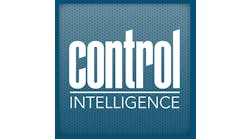In this episode of Control Intelligence, editor in chief Mike Bacidore discusses how Rockwell Automation is introducing artificial intelligence into its portfolio of products.
Transcript
Industrial production systems are designed, operated and maintained over the course of a useful life. During the Automation Fair event held this week in Anaheim, Calif., Jordan Reynolds, vice president, artificial intelligence and autonomy at Rockwell Automation, explained how the automation supplier is introducing artificial intelligence (AI) as a meaningful technology change across the various stages of a production asset’s lifecycle.
Considering the vastness of Rockwell Automation’s offerings, the task of reimagining systems and products with the ability to learn, generate instructions and optimize complex decision-making processes is an ongoing endeavor. The core portfolio is broken down into five categories—design, operations, logistics, automation and maintenance. “It’s a pretty standard automation portfolio from a company like us,” explained Reynolds.
“We think of AI not as a sixth category,” Reynolds added, “but are looking at ways that we can incorporate AI and advanced analytics into the products that our customers already use every day. We’re focused on harnessing the capabilities of AI within the existing portfolio.”
By leveraging predictive models, embedded AI can come up with plans and materials recommendations, so operations management doesn’t need to, Reynolds explained. “Maintenance teams need to detect anomalies and know what to do about them, and AI can help there, too,” he said.
Some efforts are already underway. “We’ve introduced generative AI in our programming environment, turning natural language into code,” said Reynolds. “This improves the efficiency of automation systems development. And if you don’t yet have any production data, you can use an Emulate3D simulation as a training environment.”
Meanwhile, Plex manufacturing execution system (MES) software enables fleet management against the OTTO Motors autonomous mobile robot (AMR) portfolio. “We’re incorporating optimization capabilities based on AI,” noted Reynolds. Prescriptive recommendations can be made to increase throughput and yield. The difference between a feasible and an optimal solution can be 10%, he said.
Rockwell’s FactoryTalk Analytics family has already added LogixAI, VisionAI and GuardianAI capabilities. “We currently have 3 to 4 million programmable logic controllers in operation, generating massive amounts of data. They are industry’s predominant aggregators,” Reynolds noted. “Anyone using ControlLogix should have the ability for the controller to learn and adapt.”
VisionAI was introduced for quality inspection. “Point a camera at a product coming down a conveyor,” explained Reynolds. No programming necessary. “It learns what good looks like and what bad looks like.”
For condition analysis and maintenance, Rockwell has tens of millions of variable-frequency drives (VFDs) and motion control systems in the marketplace, said Reynolds. “We have customers with 2,000 or 3,000 of them in one facility,” he noted. “These contain integrated sensors to measure motor current. We can tap into this motor current sensor and apply anomaly detection to determine the condition of the asset being driven. By integrating GuardianAI with Fiix, you can determine what work order is necessary. It’s even better when these capabilities are integrated.”



